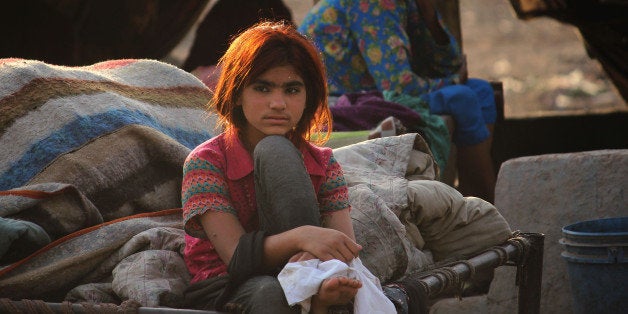
Less than six months from now, countries will once again strive to reach a global deal on climate change at the Conference of the Parties to the Kyoto Protocol . As we enter the last rounds of negotiations, and last week, at the United Nations High-Level Event on Climate Change, the public health community is speaking out louder and clearer than ever before.
It's not easy to predict precisely how many people will die because the world is getting warmer. But even the World Health Organization's (WHO) most conservative estimates conclude that a quarter of a million people per year are likely to die between 2030 and 2050.
Most of those people will be among the world's poorest and youngest citizens. Pope Francis observed in his recent encyclical on climate change, "Its worst impact will probably be felt by developing countries.... Many of the poor live in areas particularly affected by phenomena related to warming."
At WHO we estimate that the vast majority of deaths will be among malnourished children, children who contract malaria, and children who have diarrhea. Air pollution, associated with higher temperatures and the burning of many of the fuels that themselves exacerbate climate change, triggers pneumonia (one of the world's top killers of children under 5) and asthma, which already affects around 300 million people worldwide.
So what can we do?
There are two main approaches. One is to try to reduce the rate at which our planet is heating up. The best thing about this is that many of the things we can do to slow down climate change also reduce levels of pollution in the air -- and thus improve human health. Those who read my 6 June blog post will recall that one in eight deaths worldwide is currently linked to air pollution.
In that blog post, I talked about the importance of switching to cleaner fuels and improving energy efficiency. The health sector needs to work with the energy sector to transition towards cleaner and renewable sources of energy to reduce the health impacts of air pollution. The world needs more energy, particularly in poor countries where mothers still give birth in healthcare facilities with no electricity or running water. Financial commitments to improve energy in these facilities should utilize newer technologies that favor renewable energy and benefit human health.
The second approach is to devise better ways to deal with the consequences of climate change. From a health perspective, this includes better systems for monitoring (and anticipating) heat waves and planning for droughts and floods.
The health sector needs to build a climate-resilient health system, one that can monitor heat waves and air pollution and advise people how to protect themselves, and one that can work with the water sector to ensure that their new investments and management practices can withstand the more frequent floods that climate change will bring, and that they implement guidelines for safe use of wastewater so that it can be used to support food production as droughts become more severe. Where water is scarce, we need monitoring systems to track the diarrheal diseases that can have such fatal consequences, particularly for children, and other health impacts of climate change.
It's also important to improve monitoring of infectious diseases such as dengue and malaria -- both of which are likely to become more prevalent in a warmer world. Between 2000 and 2013, the malaria mortality rate decreased by 47 percent worldwide, and by 54 percent in the WHO African Region, where about 90 percent of malaria deaths occur. It would be outrageous to allow climate change to undermine this and all the other health gains made in the first years of this century.
One difficulty in generating action to address climate change is that people often regard it as something that might just happen sometime far into the future. That is not the case. Most climate change projections focus on a 4Celsius temperature rise by 2100. I find it tragic that today's babies run an ever greater risk of respiratory and cardio vascular conditions in old age -- because the world has not got its collective act together to tackle climate change.
Find more information about health and the environment and WHO's work on our life-course website at the World Health Organization: www.who.int/life-course.
